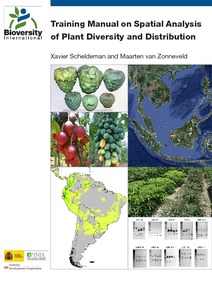Resource information
This training manual is intended for scientists and students who work with biodiversity data and are interested in developing skills to effectively carry out spatial analysis based on (free) GIS applications with a focus on diversity and ecological analyses.
These analyses offer a better understanding of spatial patterns of plant diversity and distribution, helping to improve conservation efforts. The training manual focuses on plants of interest for improving livelihoods (e.g. crops, trees and crop wild relatives) and/or those which are endangered.
Spatial analyses of interspecific and intraspecific diversity are explained using different types of data:
• species presence
• morphological characterization data
• molecular data
Although this training focuses on plant diversity, many of the types of analyses described can also be applied for other organisms such as animals and fungi.
The manual is based on specific exercises, based on real project data. In order to use the manual, you will also need to download (please click on reference material to download exercises) the relevant exercise data (listed below).
Exercise data:
2.1 Importing observation data 5.2 Diversity - Phenotypic data
2.2 Importing climate data 5.3 Diversity - Molecular marker data
3.1 Basic elements 5.4 Conservation strategies
3.2 Export to Google Earth 6.1 Realized niche
4.1 Quality control – Administrative units 6.2_potential_distribution.zip
4.2 Quality control – Atypical points 6.3 Climate change
5.1 Species diversity 6.4 Gap analysis
The manual can be used for self-learning as well as for training events like seminars or short courses on the fundamentals of spatial analysis.


